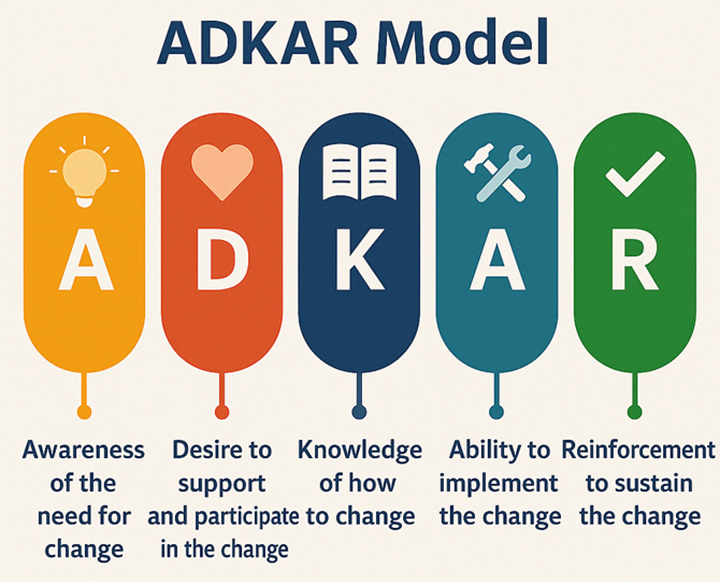7 Change management
An organisation’s decision to implement AI tools should be embedded within its broader strategic plan.
However, even with a sound strategy, technology projects can still often fail because the tools are not effectively adopted by users within the organisation. Change is inherently difficult particularly when it involves adopting new technologies. Without effective change management processes in place, organisations may encounter a range of issues, including staff resistance, reduced productivity and, ultimately, failure to successfully implement the technology.
Change management processes can help to:
- Minimise resistance: staff should be informed and involved in the change process and understand and see the benefits of the new technology.
- Focus on people: staff should be part of the change process to ensure their engagement and adoption of the new technology.
- Transition processes: change management processes should ensure that the transition to the new technology is planned, ordered and managed to minimise disruption and risk.
Change management models

There are different change management models. One example is the ADKAR Model which is a 5-step model developed by Jeff Hiatt in 2003 (Angtyan, 2019):
- (A) Awareness of the need for change.
- (D) Desire to support and participate in the change.
- (K) Knowledge of how to change.
- (A) Ability to implement the change.
- (R) Reinforcement to sustain the change.
This model emphasises individual change, aiming to support each person in the organisation through the transition processes. One of its key advantages is that it provides managers with a clear, outcome-focused framework shifting the emphasis from simply completing tasks to trying to achieve meaningful change.
As organisations move toward implementing GenAI solutions, effective change management will be essential. A thoughtful, well-planned approach is critical to maximising adoption and ensuring long-term success. If you want to explore other change models, you can read about the top ten change management models.
Next steps
To move forward, organisations should:
- Set and clearly communicate goals.
- Build a cross-functional team.
- Develop a well-defined strategy.
- Create a detailed implementation plan.
- Plan internal and external communications.
- Establish mechanisms for continuous improvement.
Throughout this course, we have explored the importance of having strategies, frameworks, and models to guide the adoption of GenAI tools.
While time has only allowed us to provide an overview, our goal is to raise awareness and help organisations think about the questions they need to ask. This includes identifying potential use cases, understanding the implications of implementation, and planning thoughtfully for roll-out and adoption.
By taking a structured and reflective approach, organisations can lay the foundation for successful and responsible use of GenAI solutions. To learn more about change management you can enrol on the free Open University course, which explores managing and leading change.
Strategic framework for AI adoption in law firms



